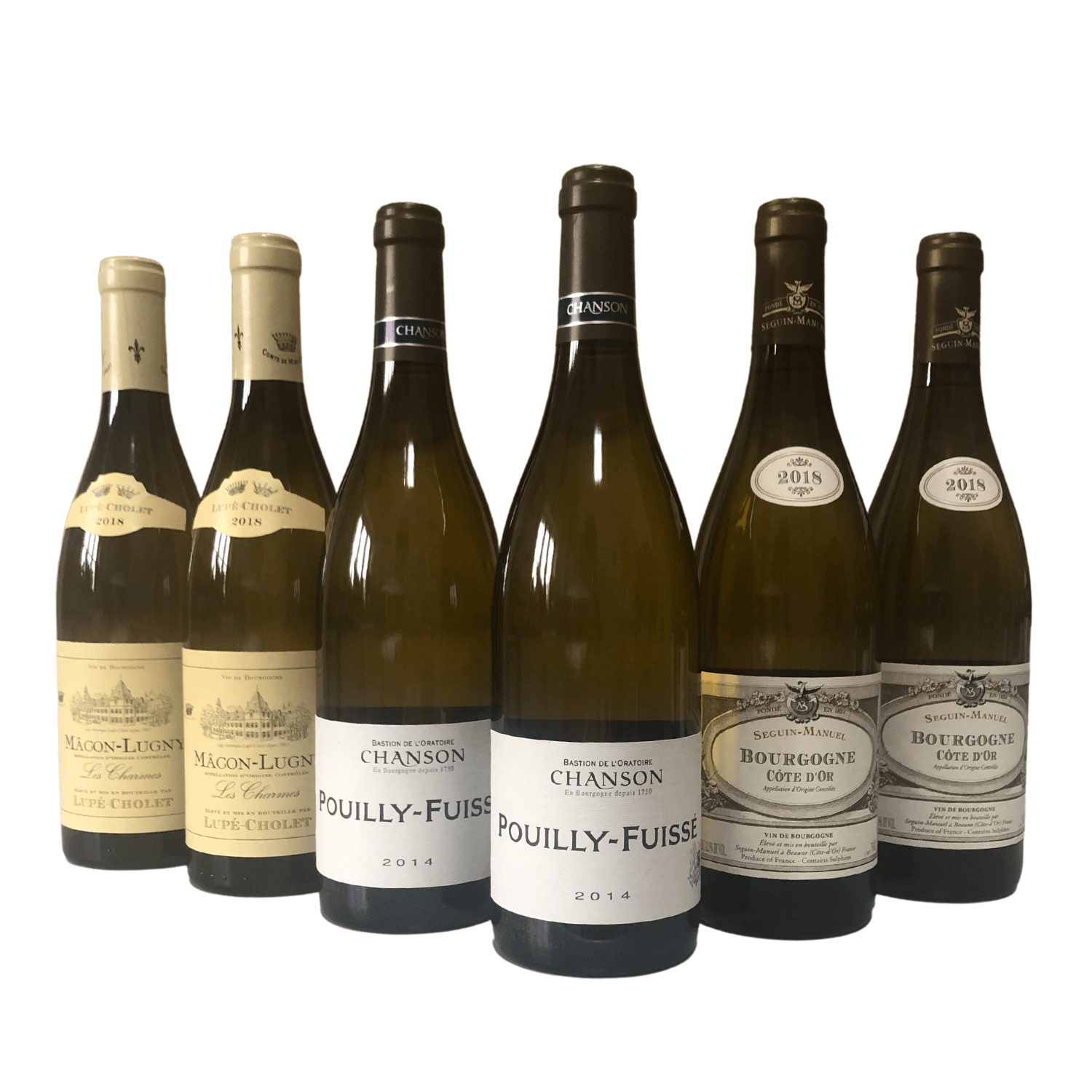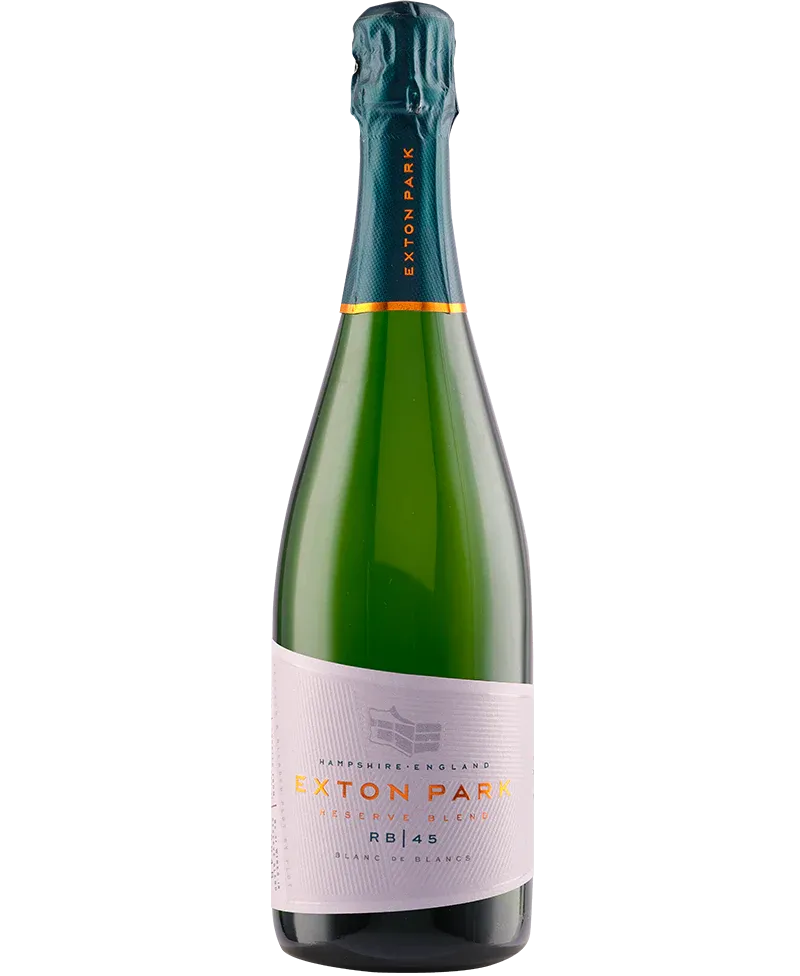What Is Port Wine? Origin, Styles, and How to Enjoy It
What Is Port Wine? Origin, Styles, and How to Enjoy It

Port wine is a fortified, typically sweet wine from Portugal’s Douro Valley, usually 19–20 % ABV. Unlike a standard red, fermentation is halted early with grape spirit, locking in natural sugar and boosting alcohol; the young wine then rests either in huge vats that preserve ruby fruit or in small oak casks where oxygen teases out tones of caramel and walnut. Whether foot-trodden in granite lagares or guided by modern paddles, every bottle is built for concentrated flavour rather than casual quaffing.
Here, we lift the cellar door on everything that matters. You’ll track Port’s journey from 17th-century river barges to contemporary cocktail bars, see how it’s produced and classified, and learn to decode labels such as Late Bottled Vintage or 10-Year Tawny. We’ll cover serving temperatures, pairings that go beyond Stilton, storing and ageing tips, sensible price guides, and brisk answers to common questions. By the finish, you’ll know which style belongs on your table—and where to source it at Mosse & Mosse.
Port at a Glance: Key Characteristics
Before we break down every style in detail, here are the headline facts you need to remember when someone asks “What is Port wine, exactly?”
- Origin: Exclusively from Portugal’s Douro Valley―now a UNESCO World Heritage vineyard.
- Fortified: A neutral grape spirit (aguardente) is added mid-fermentation.
- Sweetness: Ranges from bone-dry White Port to ultra-rich Lágrima, but most styles finish medium-sweet to sweet.
- Flavour markers: Dark berry conserve, raisin, baking spice, roasted nut, orange peel, sometimes cocoa or coffee.
- Legal strength: 19–22 % ABV under EU and IVDP rules.
Mini comparison:
| Feature | Port | Standard red wine |
|---|---|---|
| Typical ABV | 19–20 % | 75–90 ml |
| Residual sugar | 90–120 g/L (Ruby) † | <4 g/L (dry) |
| Body & texture | Full, velvety | Medium–full |
| Ageing vessel | Dave | Stainless steel or new barrique |
| Standard pour | 75–90 ml | 150 ml |
† Dry White Port sits lower (≤ 40 g/L).
Despite its post-pudding reputation, Port can shine as an apéritif with tonic, anchor a winter Old Fashioned, or lend depth to savoury sauces—proof of its underrated versatility.
What Makes It a Fortified Wine
Fortification means stepping in midway through the grape’s natural fermentation and adding ~ 1 part of 77 %-ABV aguardente to 4 parts fermenting must. The sudden alcohol spike kills the yeasts, leaving a cushion of natural grape sugar while boosting overall strength to roughly 19–20 %. EU legislation and the Douro’s own governing body, the Instituto dos Vinhos do Douro e Porto (IVDP), stipulate both the spirit’s strength and the moment it is added, ensuring a consistent style across producers.
Core Grape Varieties Used
Red styles draw on an indigenous quintet, often inter-planted and co-fermented:
- Touriga Nacional – deep colour, violet perfume, firm tannin.
- Touriga Franca – floral, red-fruit lift, soft texture.
- Tinta Roriz (Tempranillo) – cherry, spice, backbone.
- Tinta Barroca – plum, gentle tannin, weight.
- Tinto Cão – acidity, savoury herbs, longevity.
White Ports rely on grapes such as Malvasia Fina, Rabigato, Viosinho, and Gouveio, prized for citrus zest and saline freshness. Many old vineyards are field blends—up to 30 varieties tangled together—adding complexity that modern single-variety plots still struggle to replicate.
From Douro to the World: The Origin Story
The Douro Valley snakes 100 km east from the Atlantic, its vertiginous, schist-terraced vineyards baked by torrid summers and chilled by bracing winters. Vines cling to walls built by hand over centuries—a landscape now protected as a UNESCO World Heritage site. What is Port wine without this rugged birthplace? The severe slopes force low yields, concentrating flavour and tannin that easily stand up to fortification.
Trade took off in the late 1600s when British merchants, frustrated by wars with France, looked further south for a reliable red. The Methuen Treaty of 1703 cut Portuguese wine duties, and Port soon became a staple on London docks. Quality, however, was erratic, prompting the Marquis of Pombal to draw Portugal’s first demarcated wine region in 1756—nearly a century before Bordeaux classified its châteaux. Today the Douro DOC and the Instituto dos Vinhos do Douro e Porto (IVDP) enforce vineyard boundaries, grape varieties, and ageing rules that still shape every bottle.
The Role of Porto and the Lodges of Vila Nova de Gaia
For two centuries cask-laden barcos rabelos rode spring floods down-river to Porto, where cooler, mistier air on the Gaia bank slowed maturation. The granite-walled “lodges” of Taylor’s, Graham’s and company kept temperatures steady, encouraging gentle oxidation until rail and tanker trucks replaced river transport in the 1960s.
How Port Became a Staple of British Wine Culture
Names such as Taylor, Symington, Cockburn and Croft belong to Scottish and English families who embedded Port in British life. Vintage declarations were toasted at the Royal Exchange; Stilton and Port became inseparable at Christmas; even the Houses of Parliament adopted a post-vote glass. Their marketing savvy—and patriotic duty-free pricing—turned a regional curiosity into a global classic.
How Port Wine Is Made Step by Step
Turning Douro grapes into Port is both artisanal and strictly regulated. Below is the condensed journey from vine to glass:
- Hand-harvest on vertiginous slopes – September brings squads of pickers to the schist terraces. Mechanical harvesters can’t balance on the stone walls, so every bunch is cut by hand and carried to the winery in small crates.
- Grape sorting and crushing in lagares – Whole berries are tipped into shallow granite troughs (lagares). Traditional foot-treading, still used for top cuvées, gently breaks skins without crushing seeds, preserving purity while kick-starting fermentation. Many houses now supplement with robotic “piston” lagares that mimic the human rhythm.
- Rapid, warm fermentation (24–36 h) – Heat and oxygen coax out deep colour and tannin before alcohol spikes. Because the process will be stopped early, winemakers push extraction hard at this stage.
- Fortification – When the must reaches roughly
6–7 %potential alcohol, fermentation is halted by adding colourless grape brandy (aguardente) at 77 % ABV—about 115 L spirit to 435 L must. Alcohol leaps to19–20 %, yeasts die, and 90–120 g/L of natural sugar remains. - First winter rest & classification – Young Port settles in large vats until January–February, when IVDP tasters grade each lot for style potential (Ruby, Tawny, Vintage). Sub-par wine can be sold only as Douro table wine.
- Ageing and blending – Depending on the intended style, the wine moves to vast oak balseiros, smaller 550 L pipes, or is bottled early. Winemakers taste repeatedly, blending different vineyards and years for consistency.
- Bottling and release – Basic Ruby may ship after two to three years; Vintage leaves the Douro after 18 months but ages for decades in the buyer’s cellar.
Ageing Regimes: Wood, Bottle, or Both
- Ruby family – Stored in huge oak or stainless tanks with minimal oxygen to lock in purple colour and blackberry fruit.
- Tawny family – Raised in smaller, porous casks where gradual evaporation (the “angel’s share”) concentrates flavours and turns the hue amber-brown. Expect walnut, fig, and toffee notes.
- Bottle-aged styles – Vintage and Crusted spend little time in wood; their long evolution happens behind cork. Sediment forms naturally, so decanting is essential.
Certification and Quality Control
Every shipment that leaves the Douro carries a white IVDP seal and lot number. To earn it, batches must:
- Pass sensory and laboratory analysis for alcohol, sugar, and volatile acidity.
- Declare total spirit added, ensuring fortification falls within authorised limits.
- For Vintage Port, undergo a separate approval before the house may “declare” the year.
Only after these hoops can a wine legally be labelled Port, preserving the answer to what is Port wine for drinkers worldwide.
A Guide to Port Wine Styles and Labels
Browse a supermarket shelf and you’ll see everything from “Basic Ruby” to “40 Year Tawny”. Each label signals how the wine has been aged, the fruit it will show, and whether you’ll need the decanter. The Instituto dos Vinhos do Douro e Porto (IVDP) polices these terms, so once you crack the code you can buy with confidence. Use the matrix below as your quick-reference crib sheet.
| Style family | Minimum ageing | Hue in glass | Core flavour cues | Best drinking window | Decant? |
|---|---|---|---|---|---|
| Basic Ruby | 2–3 yrs in large vats | Deep purple-red | Blackberry jam, cherry, subtle spice | Drink on release | No |
| Reserve Ruby | Up to 5 yrs vat | Crimson | Dark fruits, hint of cocoa | Within 3–4 yrs of bottling | No |
| Late Bottled Vintage (LBV) | 4–6 yrs wood | Dense ruby | Blackcurrant, liquorice, pepper | Ready now; 5–8 yrs keeps | Filtered: no / Traditional: yes |
| Crusted | Blend of two or more years; bottled unfiltered | Opaque ruby | Bramble, savoury earth | 3–10 yrs in bottle | Yes |
| Basic Tawny | 2–3 yrs small cask | Russet-amber | Light caramel, dried strawberry | Drink young | No |
| Tawny Reserve | ≥ 7 yrs cask | Amber-brown | Toffee, walnut, orange peel | On release; stays fresh 6–8 wks | No |
| 10/20/30/40 Year Tawny | Average age stated | Burnished amber to mahogany | Fig, almond, coffee, spice | Drink on purchase | No |
| Colheita | Single harvest, ≥ 7 yrs cask | Similar to age-indicated | Date, hazelnut, citrus zest | Bottling date on label; drink anytime | No |
| Vintage | 18–30 mths wood then bottle | Dark in youth; garnet with age | Dense plum, violets, chocolate | 10–50 yrs ageing potential | Yes |
| Single Quinta Vintage | Same as Vintage but estate-specific | As above | Terroir-driven nuance | 5–20 yrs | Yes |
| White Port (dry to sweet) | 2–3 yrs vat/cask | Pale straw to gold | Lemon peel, almond, honey | Chilled, anytime | No |
| Rosé Port | Few months steel | Pink | Strawberry, melon, floral | Drink within 2 yrs | No |
Ruby Styles
Ruby is all about primary fruit preserved by ageing in large, oxygen-shy vats.
- Basic Ruby: The entry point—juicy, uncomplicated, wonderful with a square of dark chocolate or poured over vanilla ice-cream.
- Reserve Ruby: Selected lots with extra depth; the sweet spot for everyday sipping.
- Late Bottled Vintage (LBV): A single-year wine left in cask until mellow, then bottled either filtered (ready to go) or traditional, which throws sediment and behaves like a baby Vintage.
- Crusted Port: Old-school and underrated. Multiple harvests are blended, bottled unfiltered and sealed with a driven cork. It ages like Vintage at a fraction of the price—just don’t forget the funnel.
Tawny Styles
Extended cask ageing allows controlled oxidation; colour fades while nutty complexity blooms.
- Basic Tawny: Technically “ruby that has gone tan”, offering soft caramel notes.
- Reserve Tawny: Minimum seven years in 550 L pipes; balance of dried fruit and gentle oak spice.
- Age-indicated Tawny: The number is an average, not the youngest drop in the bottle. Expect increasing concentration: 10 Year = apricot and almond, 40 Year = espresso, burnt sugar and ethereal length.
- Colheita: Think “vintage tawny”. One harvest, decades of barrel time, and the bottling year printed on the back label tells you how long it has slumbered.
Vintage and Single Quinta Vintage Ports
Vintage Port is the flagship answer to what is Port wine at its most serious? Declared only in standout years, it spends about 18 months in barrel before a lifetime in glass. Tannic and brooding when young, it evolves into a silken mix of dried fig, cigar box and mint. Single Quinta bottles come from one estate—often the producer’s best—and are released in years when a full declaration isn’t made, giving collectors a more affordable glimpse of greatness.
White and Rosé Port
White Port is made from indigenous white grapes and ranges from Extra Dry (excellent with tonic and a lime wheel) to Lágrima, a luscious nectar for pâtisseries. A brief skin soak delivers colour; oxidative ageing can layer in almond and marmalade. Rosé Port, a 21st-century twist, is crafted by bleeding off red must after a few hours’ skin contact. Serve it chilled with berries or shake it into a summer spritz—proof that Port isn’t just a fireside sipper.
Serving, Pairing, and Enjoying Port
Pour Port into the wrong glass at the wrong temperature and even a top Vintage can feel clumsy. Follow the simple pointers below and every style will show its best side.
- Glassware: A small tulip‐shaped copita or ISO tasting glass concentrates aroma far better than a chunky schooner. Aim for a modest 75–90 ml measure; Port’s punchy 19 % ABV rewards sipping, not swigging.
- Serving temperatures:
- Vintage & Ruby: 16–18 °C (cool room).
- Tawny: 12–15 °C (cellar or 20 minutes in the fridge).
- White & Rosé: 10–12 °C (well-chilled but not icy).
- Decanting: Essential for Vintage, Crusted and traditional-style LBV. A gentle pour through a muslin-lined funnel keeps sediment out of the glass.
- Open-bottle life: Sugar and spirit preserve Port longer than table wine, but air eventually dulls fruit. The rule of thumb:
| Style | Resealed in fridge | Best within |
|---|---|---|
| White / Rosé | ✅ | 1–2 weeks |
| Basic Ruby | ✅ | 2–4 weeks |
| LBV (filtered) | ✅ | 1–2 weeks |
| Tawny Reserve & Age-indicated | ✅ | 4–6 weeks |
| Vintage & Crusted | ⚠️ upright in cool dark place | 24–48 h |
Take a quick sniff each time; if it smells flat or heavily oxidised, save it for cooking.
Classic Food Pairings
Forget the tired “Port and Stilton only” trope—though it is delicious. Try these matches:
- Vintage or LBV + blue cheeses (Stilton, Gorgonzola): tannin meets salt; fruit meets cream.
- 10-Year Tawny + aged Cheddar or Comté: nutty echoes and balanced sweetness.
- 20-Year Tawny + pecan pie, crème brûlée, or a cheeseboard of walnuts and dried figs.
- Dry White Port + goat’s cheese salad or salted almonds: refreshingly aperitif-like.
- Rosé Port + summer berries or Eton mess: bright red fruit complement.
- Savoury curveball: Ruby reduction over duck breast or pork belly.
Cooking and Cocktail Uses
Port’s intensity lifts both shaker and saucepan.
- Deglaze pans after searing venison, beef, or mushrooms; reduce with stock for an instant glossy sauce.
- Fold a splash of Tawny into chocolate brownie batter or drizzle over figs before roasting.
- Crowd-pleasing cocktails:
- Port & Tonic: 1 part Dry White Port, 2 parts tonic, lime wheel—an Iberian G&T.
- Ruby Spritz: 60 ml Ruby, ice, soda, orange slice.
- Tawny Old Fashioned: 40 ml Tawny, 25 ml bourbon, dash bitters, orange zest.
- Left-over Vintage? Reduce with sugar and star anise for a luxurious dessert syrup.
Armed with the right glass, chill, and pairing, Port transforms from once-a-year indulgence into a versatile player across courses and seasons.
Buying, Storing, and Ageing Port at Home
So you’ve decided to keep a bottle or three on hand—how do you choose wisely? Start by decoding the label. Every legal Port must show the producer’s name, the declared style (Ruby, 20 Year Tawny, LBV, etc.), vintage or bottling year, alcohol (% ABV), and an IVDP seal number proving it passed official tasting. A late bottling date on an LBV, for instance, signals extra wood ageing and a softer palate.
Rough UK street prices provide a quick sanity check:
| Style | Typical retail £ |
|---|---|
| Everyday Ruby / White | 10–20 |
| Late Bottled Vintage | 18–30 |
| 10 Year Tawny | 22–35 |
| Vintage Port | 50 + |
What is Port wine good for? Plenty. A basic Ruby lifts cocktails; LBV or 10 Year Tawny makes an affordable yet impressive dinner finale; Vintage is the gift that matures alongside weddings, anniversaries, or newborns—just note the patience required.
Proper Storage and Cellaring
Unopened bottles like the same conditions as fine table wine: 12–14 °C, around 70 % humidity, darkness, and minimal vibration. Keep T-cap bottles (most Ruby and young Tawny) upright to prevent spirit erosion of the seal; anything with a driven cork (Vintage, Crusted, Colheita) lies horizontally. Rough longevity guide:
- Ruby / White: enjoy within 3 years
- LBV (filtered): 5–8 years
- 10/20 Year Tawny: stable once bottled; no need to cellar
- Vintage: 20–40 + years, depending on house and year
Opening, Decanting, and Serving Older Bottles
Older Ports can sport stubborn corks. An Ah-So cork puller slips in without shredding; port tongs heat and snap the neck if the closure crumbles. The ritual:
- Stand the bottle upright for 24 hours to settle sediment.
- Remove capsule, wipe neck clean, extract cork slowly.
- Decant through a muslin-lined funnel, stopping when the deposit approaches.
Assess colour and aroma—brick tones and dried-fruit perfume are normal; vinegar or mould means it’s past it. Pour into clean, aroma-friendly glasses and enjoy the culmination of decades in your care.
Quick Answers to Common Port Questions
Is Port stronger than ordinary red wine?
Yes. Most Port lands at 19–20 % ABV, whereas a typical table red sits around 12–14 %.
What’s the main difference between Port and Sherry?
Port hails from Portugal’s Douro and is fortified during fermentation, locking in sweetness. Sherry comes from Jerez in Spain, is fortified after fermentation, and ages in a solera that creates drier styles.
Can you drink Port wine by itself?
Absolutely—sip it neat, pour it over ice, or mix it into cocktails such as White Port & Tonic.
What is a fortified wine?
Any wine whose fermentation is stopped or stabilised with added grape spirit, boosting alcohol and shelf-life. Port, Sherry, Madeira and Marsala all qualify.
What is Port wine made of?
Predominantly indigenous grapes—Touriga Nacional, Touriga Franca, Tinta Roriz, Tinta Barroca, Tinto Cão for reds; Malvasia Fina, Rabigato and others for whites.
Raise a Glass to Port
From vertiginous Douro terraces to candle-lit dining rooms, Port has earned its place as a wine of celebration and quiet contemplation alike. Fortification locks in the valley’s sun-ripened fruit; centuries of craft turn that raw power into everything from racy Dry White to mahogany-coloured 40-Year Tawny or cellar-worthy Vintage. Whether you chill it for a summer spritz, match it to game, or wheel it out with Stilton at Christmas, there is a style to suit every palate, pocket, and season.
Ready to taste the spectrum for yourself? Browse the curated Port range at Mosse & Mosse and sign up to our newsletter for tasting notes, pairing tips, and early access to limited releases. The next great bottle is waiting—just pop the cork and let the Douro speak. Saúde!







